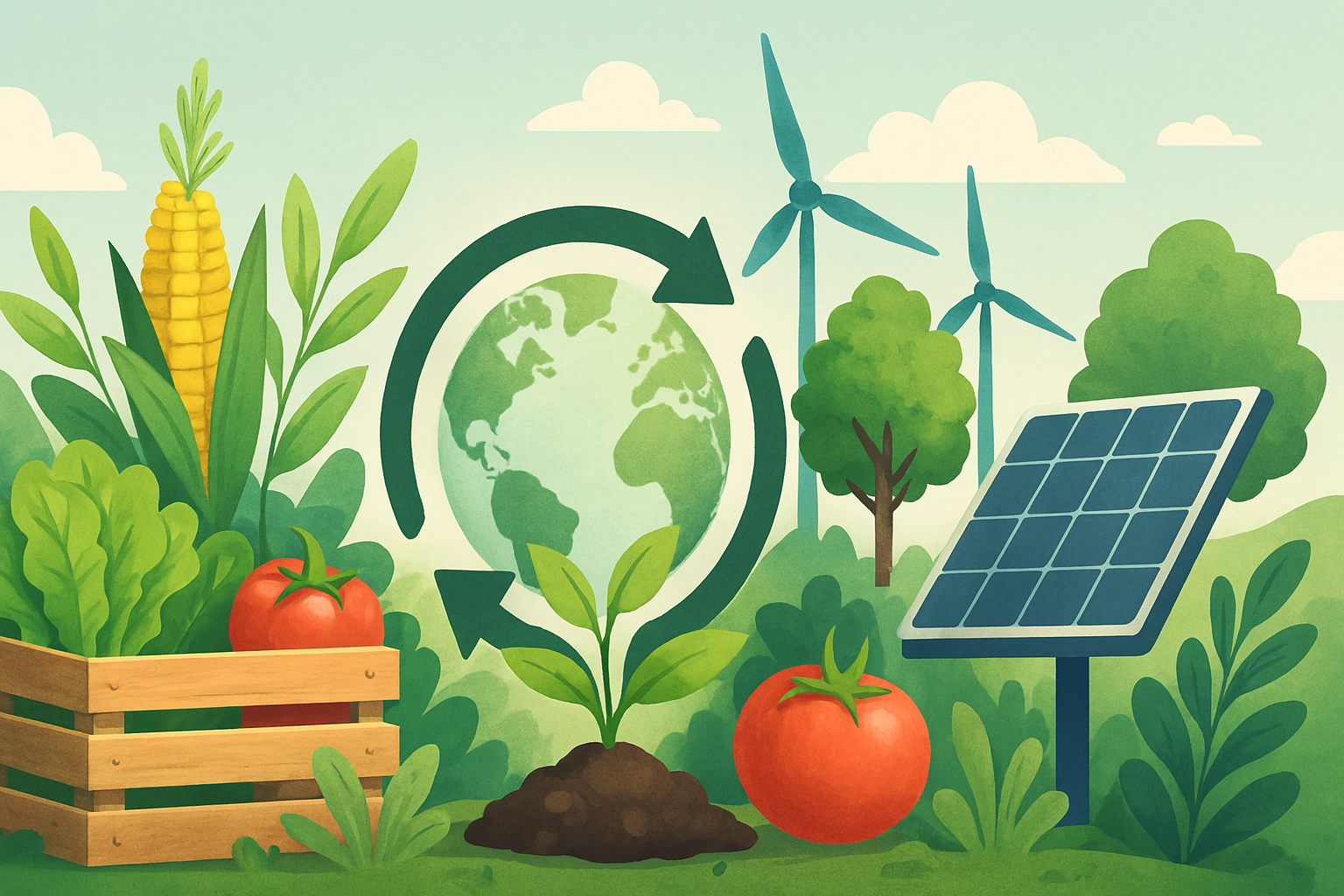As global populations rise and environmental pressures mount, sustainability has become a cornerstone of innovation in the food technology sector. The need to feed nearly 10 billion people by 2050, while conserving natural resources and minimizing climate impact, has spurred the development of sustainable food systems. From regenerative agriculture to cutting-edge recycling technologies, sustainability in FoodTech addresses challenges across the entire food value chain—production, processing, packaging, and distribution. This article explores how sustainable practices are reshaping the future of food, making it both resilient and responsible.
Regenerative Agriculture and Soil Health
Unlike conventional agriculture, which often depletes soil nutrients and contributes to erosion, regenerative agriculture focuses on rebuilding soil health. Practices like cover cropping, reduced tillage, and rotational grazing enhance biodiversity and increase carbon sequestration. Companies like Indigo Ag and startups such as Regrow are leveraging data analytics and remote sensing to help farmers adopt soil-friendly techniques. Improved soil health not only increases yields but also mitigates climate change by pulling carbon dioxide from the atmosphere.
Water Conservation Strategies
Agriculture accounts for approximately 70% of global freshwater withdrawals. To address this, FoodTech companies are turning to water-efficient systems such as hydroponics, aeroponics, and aquaponics. These closed-loop growing methods reduce water usage by up to 90% compared to traditional farming. Additionally, precision irrigation systems—enabled by IoT sensors and AI—ensure crops receive only the water they need, minimizing waste and runoff. For example, Israeli company Netafim provides smart drip irrigation solutions tailored for arid climates.
Carbon Footprint Reduction
Reducing greenhouse gas emissions from agriculture is critical for climate stability. One major target is methane emissions from livestock. Startups like Blue Ocean Barns are developing feed additives from red seaweed that significantly reduce methane output in cattle. On the crop side, low-emission fertilizers and carbon-capture farming practices are gaining traction. Companies are also streamlining logistics and adopting electric delivery fleets to reduce emissions across the supply chain.
Combating Food Waste
Roughly one-third of all food produced globally is wasted, contributing to both economic and environmental losses. To tackle this, FoodTech startups are employing AI to forecast demand, optimize inventory, and extend shelf life. Spoiler Alert and Apeel Sciences are examples of firms addressing waste—Apeel develops plant-based coatings that slow spoilage in fresh produce, while Spoiler Alert connects suppliers with surplus inventory to buyers at a discount. Food rescue apps and blockchain traceability systems also promote accountability and redistribution.
Eco-Friendly Packaging Solutions
Plastic pollution is a major sustainability challenge. In response, innovators are designing compostable and biodegradable packaging made from materials like seaweed, cornstarch, and fungi. Notpla, for instance, creates edible sachets from seaweed to replace single-use plastic wrappers. Meanwhile, Ecovative uses mushroom mycelium to create sustainable packaging for perishables. Beyond materials, smart packaging technologies—like freshness sensors—reduce unnecessary waste by better informing consumers.
Decentralized and Localized Food Systems
Shortening the distance between production and consumption reduces emissions, enhances freshness, and improves food security. Urban farming initiatives, such as Gotham Greens and Infarm, use vertical farming in cities to produce leafy greens year-round with minimal resources. Community-supported agriculture (CSA) programs and hyper-local food delivery services also contribute to decentralized, sustainable ecosystems. These models improve resilience by reducing dependency on long, fragile supply chains.
Renewable Energy Integration
Sustainable FoodTech operations increasingly rely on renewable energy sources. Solar-powered greenhouses, wind-powered food processors, and biogas digesters are becoming common in agricultural infrastructure. Companies like Plenty and Bowery Farming run high-tech indoor farms with renewable energy integration, reducing reliance on fossil fuels and cutting operational carbon footprints. Some startups are even repurposing food waste into bioenergy to power their facilities.
Conclusion
Sustainability is at the heart of the FoodTech revolution. As the industry evolves, it embraces holistic strategies that go beyond efficiency and profitability—prioritizing ecological stewardship, climate resilience, and equitable food access. Through innovative technologies, collaborative ecosystems, and policy alignment, sustainable food systems are becoming both viable and scalable. While challenges remain in adoption and accessibility, the trajectory is clear: the future of food is green, smart, and circular. By integrating sustainability into every link of the food chain, FoodTech paves the way for a healthier planet and a nourished global population.

